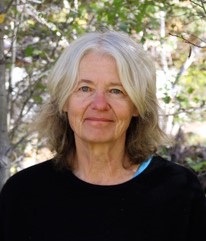“There is the art of diagnosis,” Ezra Pound wrote, “and the art of cure.” Both, of course, are necessary. There is political activism, and there is also spiritual or imaginative activism.
Most of us are frightened of the future and grief stricken at what humans have done to the earth. As I see it, one of the unique tasks of poets, especially at this time, is to be in imaginative relation with the Earth. And to use language as a tool toward that effort.
To have an imaginative—as opposed to an abstract or intellectual—relationship with the earth is to be in attendance to what Denise Levertov called “other forms of life that want to live.”
Levertov: “The progression seems clear to me: from Reverence for Life to Attention to Life, from Attention to Life to a highly developed Seeing and Hearing, from Seeing and Hearing (faculties almost indistinguishable for the poet).”
To be in relationship is to continually be developing a relationship. To listen. To observe. To spend time together. To be in profound attendance.
We are, comparatively, a loud species. Bee-loud, as in constant, but with more volume. We don’t share the same language with other forms of nonhuman life, though we share many of the same senses, albeit with differing levels of adeptness.
We share, however, the same Imaginal Presence, or life force, or soul, which enables us to communicate with each other.
Therefore, the question, as the philosopher Henry Corbin articulates in his book Spiritual Body , Celestial Earth, “is much less a matter of answering questions concerning essences (“what is it?”) than questions concerning persons (“who is it?” or “to whom does it correspond/”) for example, who is the earth? who are the waters, the plants, the mountains?”
Many indigenous cultures have centered their cultures around this knowledge. Here in Montana, I hear stories about the deer people, coyote people, and chickadee people. “The first treaty was with the buffalo,” I recently heard Lailani Uphama, a Blackfeet educator and journalist, say. “Many arrangements and treaties were made with other beings.”
To have a sense of reciprocity or treaty—a healthy ecology—means believing in the Personhood of those who share the earth with us.
By imaginative or creative practice, I mean this kind of work. I mean a communication that begins outside us, with our senses, and continues in acts of interiority that, paradoxically, connect us with others and might begin to heal the rift between us.




